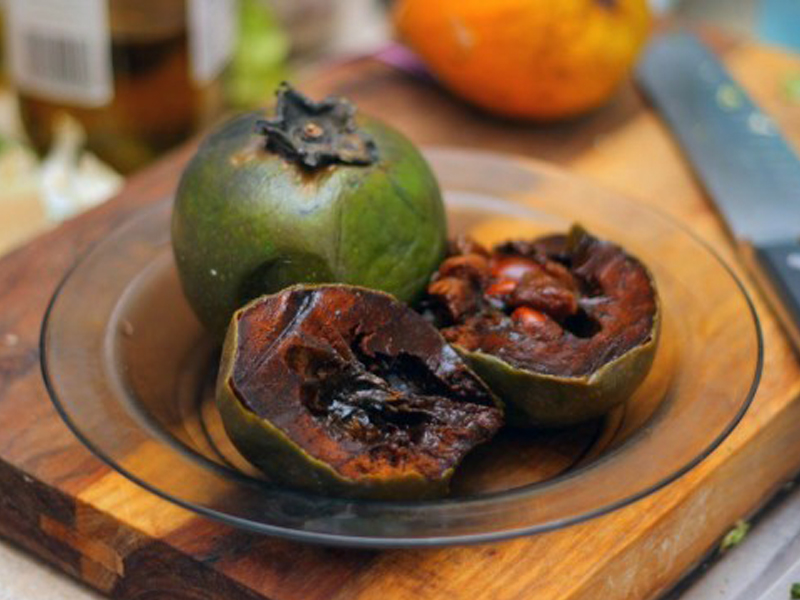The name George comes to us from Ancient Greek Georgos, meaning "tilling the ground." Thanks to the Crusaders, St. George became the patron saint of England, and since the 1590s, the phrase, “By George!” has been a shout of exclamation.
King George I was, among other things, a big fan of pudding from his first Christmas in England in 1714.
Gardeners can keep the Christmas pudding tradition alive by growing Black Sapote (Diospyros nigra), commonly called “Chocolate Pudding Fruit.” This tropical tree will easily bear fruit, even when grown in a 10-inch pot. Black Sapote is in the same plant family as persimmons, and like persimmons, unripe fruits are sour and astringent. Left to ripen from green to a dark black, the fruit’s flesh looks for all the world like chocolate pudding!
After the fruit ripens, slice it in half and scoop out the rich, dark-brown pulp that really does taste like chocolate pudding.
Black Sapote grows best in full sun, so find a south- or west-facing window, or place it under grow lights.
Apply a good organic fertilizer once a month when the plant is actively growing from spring until the end of summer. The fruits ripen on the tree from July right through Christmas.
To keep the Black Sapote tree short, be sure to cut back the top of the tree right after the fruit begins to form.
Besides eating the Black Sapote fruits fresh, you can cook them into cakes, pies, and even homemade ice cream.
The fruits are quite nutritious, high in fiber and rich in antioxidants, and a good source of copper, iron and potassium. The fruit also contains vitamins, such as large amounts of vitamin C with twice the ascorbic acid of an orange. Black Sapote is also a good source of folate, niacin and pantothenic acid. Sapote fruit is even used in folk medicine to treat inflammatory diseases.
You can freeze the fruit and later serve it partially thawed; it will have the consistency of gelato or ice cream.
While you can grow Black Sapote from seeds, the resulting plants will not come true, and seed-grown trees often take many years to bear fruit. This is why most commercially available plants are grafted.
Black Sapote plants are available from specialty nurseries such as Logee's Greenhouse (www.logees.com, phone 860-774-8038).
Every two or three years, you may have to repot your Black Sapote. When your plant outgrows its pot, transfer it to a pot that is just one size larger than its previous home.
So forget figgy pudding at Christmas, and grow your own chocolate pudding Black Sapote. You will have treats and memories for years, by George!


















































